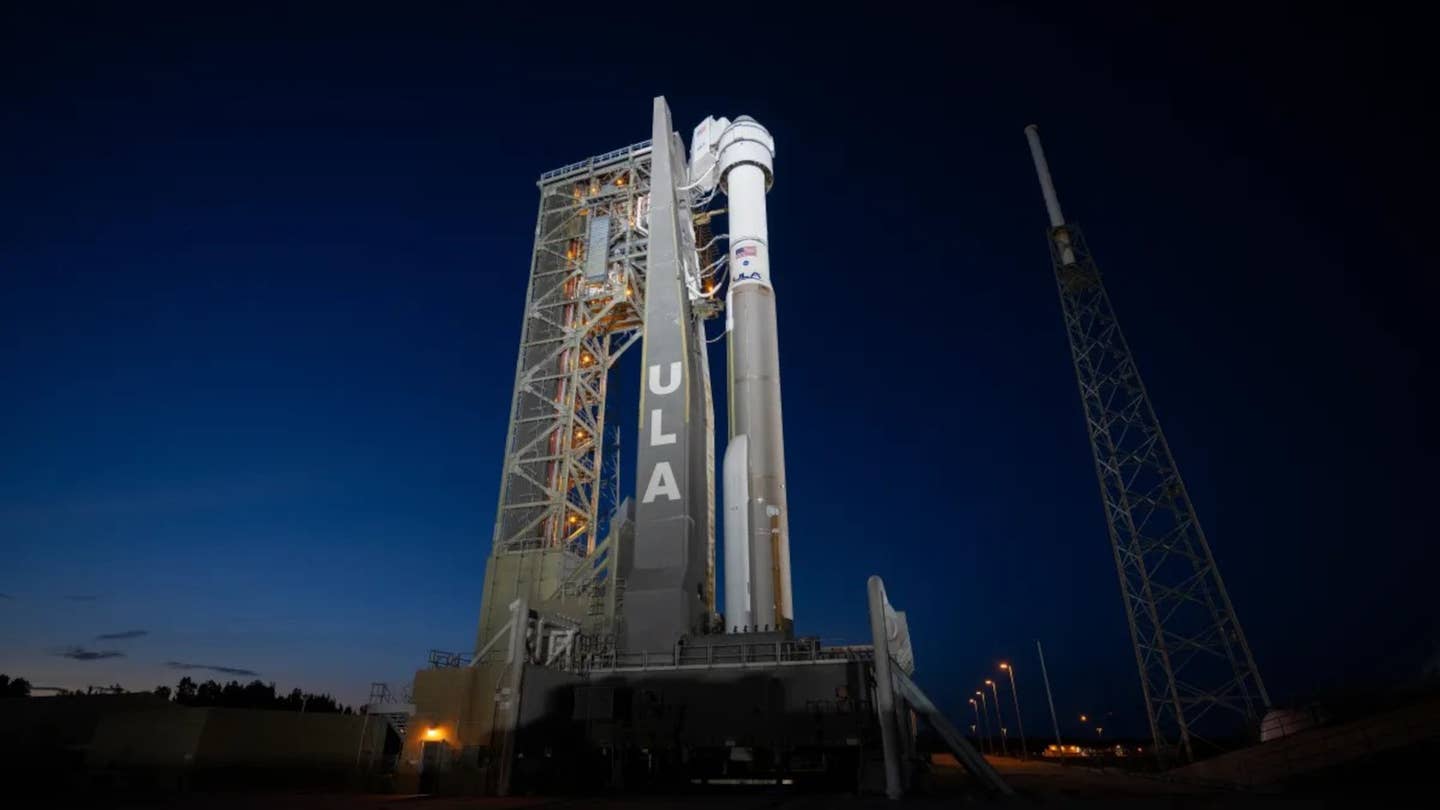Boeing, NASA Delay Starliner Again Due to New Issue
The spacecraft’s inaugural crewed flight test will now occur no earlier than 4:43 p.m. EDT on Tuesday after teams discover a new issue.

Boeing’s Starliner spacecraft, stacked atop ULA’s Atlas V rocket, stands on the launchpad of Space Launch Complex-41 at Cape Canaveral Space Force Station in Florida. [Courtesy: NASA]
NASA, Boeing, and United Launch Alliance (ULA), a joint venture between Boeing and Lockheed Martin, are now targeting no earlier than 4:43 p.m. EDT on Tuesday for the next launch attempt of the crewed flight test (CFT) of Starliner: Boeing’s semireusable vessel to the International Space Station (ISS).
The approximately weeklong mission—which will take NASA astronauts Butch Wilmore and Suni Williams to the ISS and back—is intended to be Starliner’s final test flight before NASA certifies it for Commercial Crew rotation missions to the orbital laboratory. It would be the first crewed launch on ULA’s Atlas V rocket, which will send the spacecraft into orbit, and the first on the Atlas family of rockets in more than half a century.
An initial Starliner CFT launch attempt, scheduled for May 6, was scrubbed hours before takeoff due to an oscillating pressure regulation valve on the Atlas V’s upper stage. Boeing and NASA then pushed back the mission to May 10, later revising their timeline to Friday after successfully replacing the faulty valve.
Now, a new issue—involving the Starship capsule itself, rather than Atlas V—is holding up things.
NASA and Boeing on Tuesday said Starliner crews discovered a small helium leak on the spacecraft’s service module “traced to a flange on a single reaction control system thruster.”
The service module, which unlike Starliner’s crew module is expendable, is designed to power and maneuver the autonomous spacecraft. It is equipped with 28 reaction control system engines, designed by Boeing supplier Aerojet Rocketdyne, that generate 100 pounds of thrust each and stabilize the capsule in orbit. Helium allows the thrusters to fire and is neither toxic nor combustible.
Starliner teams are working to address the issue and conduct additional testing, resulting in the new target launch date of Tuesday.
“As a part of the testing, Boeing will bring the propulsion system up to flight pressurization just as it does prior to launch, and then allow the helium system to vent naturally to validate existing data and strengthen flight rationale,” the company said.
Boeing and NASA added that no further issues have arisen since the scrubbed launch on May 6.
Starliner successfully reached the ISS for the first and only time during an uncrewed test flight in 2022. But since Boeing unveiled the concept for the spacecraft in 2010, the program has been bogged down by delays. The CFT has been no exception.
NASA intends for Starliner to serve as a redundant alternative to SpaceX’s Crew Dragon capsule—which, like Starliner, was designed to ferry astronauts to low-Earth orbit destinations—in the case of a contingency, such as the one that stranded astronaut Frank Rubio in space for six months (and helped Rubio achieve a U.S. spaceflight record in the process). Crew Dragon has flown all eight Commercial Crew missions to date under a contract with the space agency agreed upon in 2014, which has since been extended.
NASA and Boeing have a similar contract, worth $4.2 billion, for six missions, the first of which could fly early next year if all goes according to plan Tuesday.
Like this story? We think you'll also like the Future of FLYING newsletter sent every Thursday afternoon. Sign up now.

Sign-up for newsletters & special offers!
Get the latest FLYING stories & special offers delivered directly to your inbox






